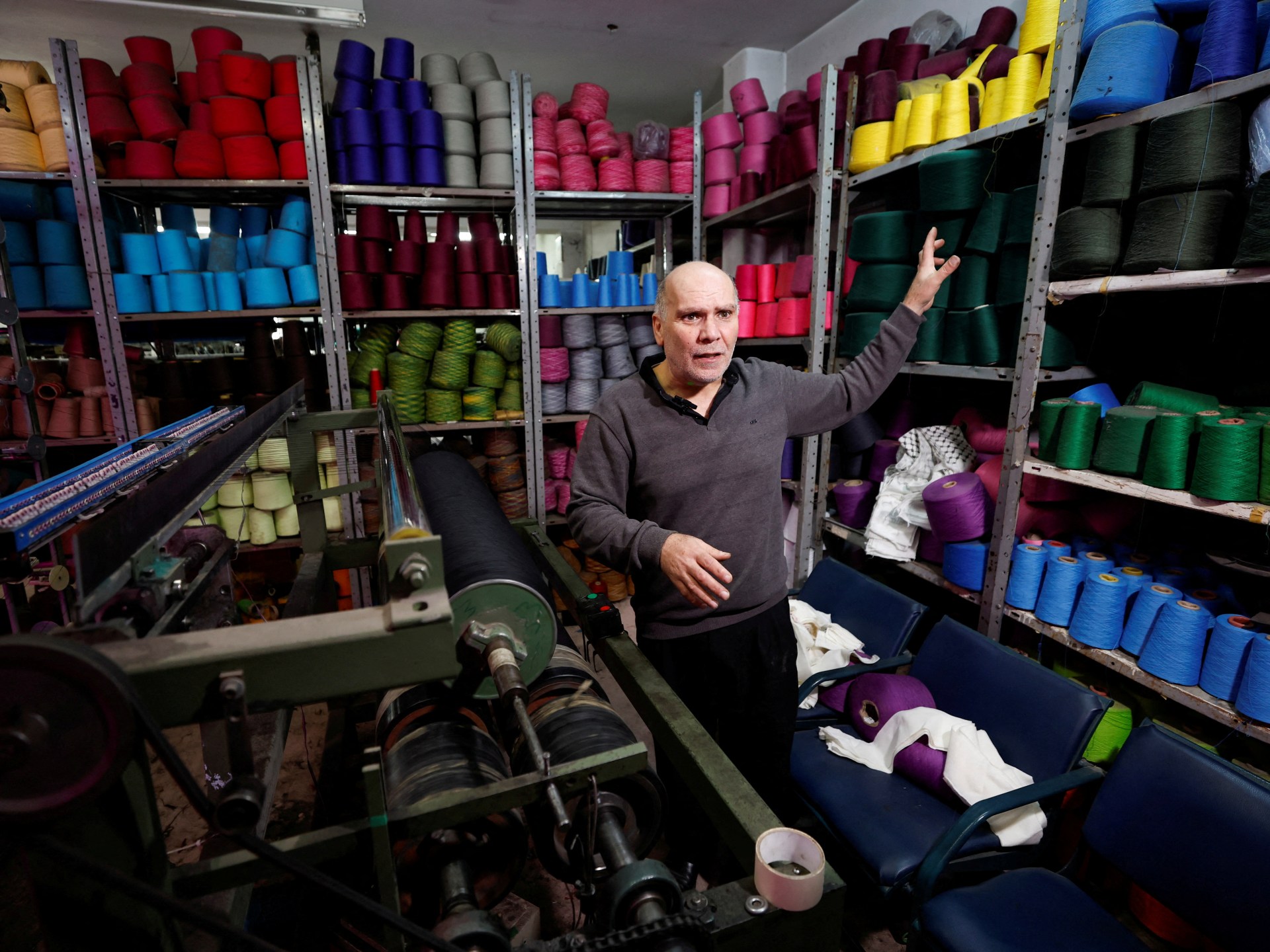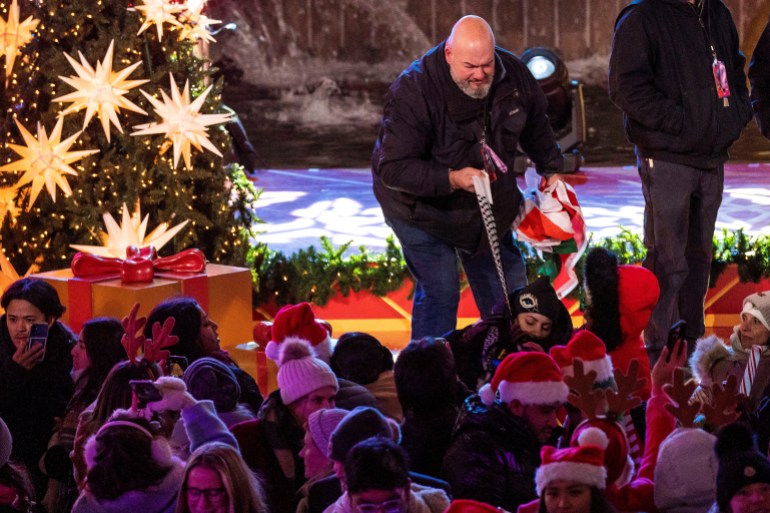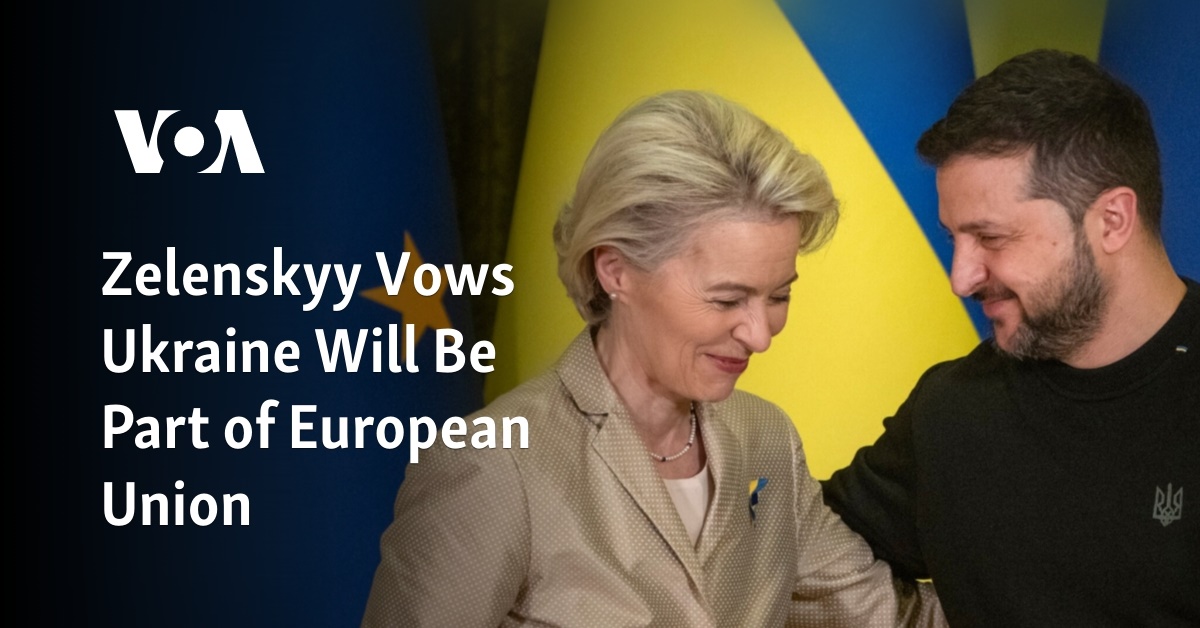
More and more Americans are getting dressed the keffiyehthe distinctive patterned scarf closely associated with the Palestinians to call for a ceasefire against Israel’s attacks on Gaza or to signal their support for the Palestinians.
Sales of the scarves have surged since the war between Israel and Hamas began in October, U.S. retailers say, although at some protests the keffiyehs have been forcibly removed by security forces and wearers have reportedly been subjected to verbal and physical abuse.
“It was like a light switch. Suddenly there were hundreds of people on the site at the same time, buying whatever they could,” said Azar Aghayev, the U.S. distributor of Hirbawi, which opened in 1961 and is the only manufacturer of keffiyehs in the Israeli-occupied West Bank.
“Within two days, the stock we had was just gone, and not just gone, it was oversold.”
Hirbawi, which has patented its brand, sells scarves internationally through its U.S. and German websites as well as on Amazon. All 40 variants on the U.S. website, including many in bright colors as well as the traditional black and white, have sold out, Aghayev said.
Quantities of Keffiyeh scarves were up 75 percent on Amazon.com in the 56 days between Oct. 7 and Dec. 2 compared to the 56 days before, data from e-commerce analytics firm Jungle Scout showed.
Searches for “Palestinian scarf for women” increased 159 percent in the three months ended December 4 compared to the previous three months; Searches for “military scarf Shemagh,” “Keffiyeh Palestine,” and “Keffiyeh” increased by 333 percent, 75 percent, and 68 percent, respectively.
The keffiyeh, with its fishing net pattern, is common throughout the Arab world and its roots date back to 3100 BC. BC. For the first time it symbolized Palestinian resistance 1936 Arab Revolt against British rule and later became the signature headgear of Palestine Liberation Organization leader Yasser Arafat.
While Hirbawi is the best-known manufacturer, there are also small artisans and global imitators; Luxury goods maker Louis Vuitton sold a version in 2021.
US supporters of the Palestinians and Israel did it faced with threats and attacks since the start of the Middle East conflict, with Jewish Americans seeing a rise in anti-Semitism and Muslim Americans seeing a rise in Islamophobia.
Hazami Barmada, 38, a former U.N. official who lives in Virginia, recently wore a keffiyeh as she rallied outside the White House and in Washington’s Georgetown neighborhood Gaza ceasefire.
Putting on the scarf felt like a “superpower,” she said, reconnecting her with her Palestinian heritage and providing a symbolic connection to the children of Gaza. But she believes it also leads to verbal abuse. “I’m taking a calculated risk,” Barmada said.
Security Target, Vermont Shooting
At the Christmas tree lighting at New York’s Rockefeller Center in November, an attendee wearing a keffiyeh had it ripped off by a security guard – a moment captured in a Reuters photo.
The security guard approached the protesters at the front of the crowd, who were carrying a banner, a Palestinian flag and a keffiyeh that one of the protesters was wearing. The guard grabbed all three items and removed the keffiyeh from the protester’s neck, said photographer Eduardo Munoz.
The Council on American-Islamic Relations has documented several cases in which people have been targeted for wearing a keffiyeh, from a father who was attacked in a Brooklyn playground to a Harvard University graduate student who was said to have done so , she was wearing a “terrorist” scarf.

The most serious incident involved three students of Palestinian descent – two wearing keffiyehs – were shot in Burlington, Vermont, during a walk last month. Hisham Awartani, 20, is paralyzed from the chest down. The authorities have filed charges a suspect in the shootings on attempted murder charges and are investigating whether it was a hate crime.
Tamara Tamimi, the mother of one of the students, Kinnan Abdalhamid, told CBS News last week that she believes they would not have been targeted if they had not been “dressed the way they were and speaking Arabic.”
Students for Justice in Palestine (SJP), a group that has been at the center of US campus activism since Hamas’ attack on Israel on October 7, has encouraged students to do so in solidarity with the students who were shot in Vermont in the week following the incident were ordered to “wear their keffiyeh.”
Still, SJP member Anna Rajagopal said in Houston, Texas, that she and other members had not worn their keffiyeh outside spaces they considered friendly to Arabs and Muslims since October, after people waving Israeli flags stormed a cafe, where they were, surrounding and shouting insults.
“A friend and I were conscious of taking off our keffiyehs after leaving Palestinian Arab areas to be safe,” said Rajagopal, 23, a freelance writer who graduated from Rice University in May and is also a member of Jewish Voice for Peace. a group that advocates for Palestine’s independence.
However, demand remains unbroken, say sellers. “If we had 20,000 keffiyehs in stock, we would have sold them,” said Morgan Totah, founder of Handmade Palestine, a group based in the Palestinian city of Ramallah that sells local artisan goods online.






Recent Comments